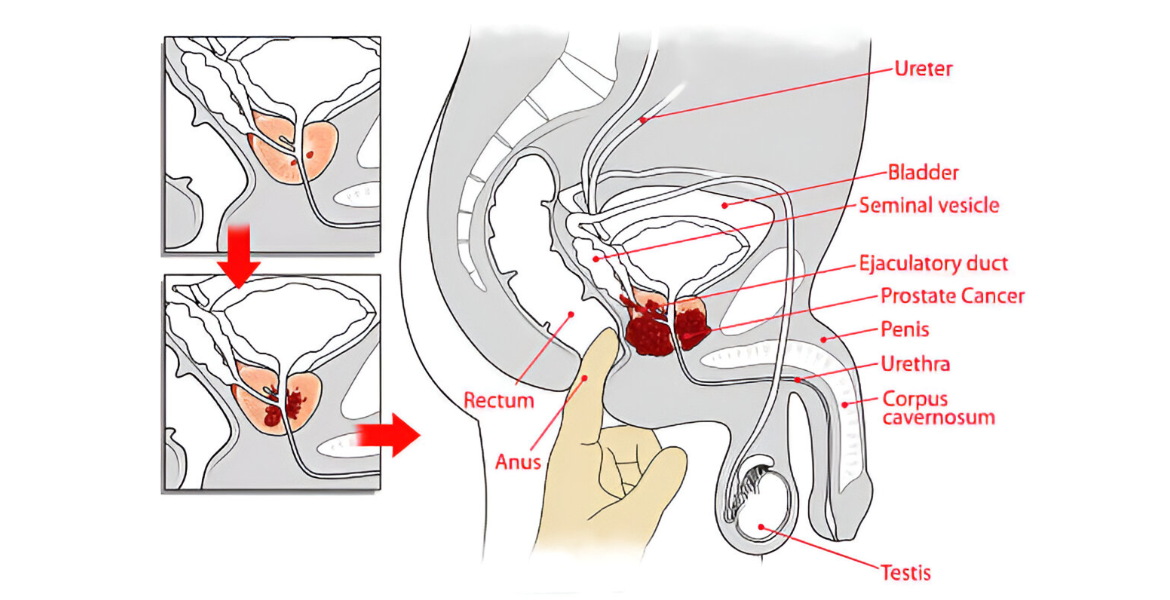When to See a Doctor for an Enlarged Prostate
If you suspect you have an enlarged prostate (Benign Prostatic Hyperplasia or BPH), it’s important to consult a doctor for a thorough evaluation. Key signs that warrant a medical visit include:
- Difficulty starting urination or weak urine flow
- Frequent urination, especially at night
- Urgency to urinate
- Feeling of incomplete bladder emptying
- Dribbling at the end of urination
- Pain or discomfort during urination
Hematuria (blood in the urine) is a serious concern and requires immediate medical attention, as it may indicate a more severe condition despite the often benign nature of BPH.
If you experience recurrent UTIs or persistent symptoms after treatment, consult a doctor to determine the underlying causes. Additionally, symptoms like back pain, flank pain, or incontinence could signal kidney issues related to an enlarged prostate and should be evaluated by a physician.
Risk Factors for Enlarged Prostate
Several factors can increase the likelihood of developing an enlarged prostate:
- Age: The risk of BPH rises significantly with age. By age 60, more than 50% of men may experience an enlarged prostate, and this percentage increases to 90% by age 80.
- Lifestyle: A diet high in red meat and fat, obesity, and lack of exercise can contribute to BPH symptoms. A poor lifestyle may exacerbate the condition.
- Hormones: Changes in testosterone and estrogen levels, common with aging, play a role in prostate growth. Decreased testosterone and increased estrogen contribute to BPH development.
- Other Health Conditions: Men with cardiovascular disease, diabetes, or high blood pressure are at increased risk for an enlarged prostate.
Prevalence in India
BPH prevalence increases with age, affecting a substantial number of older men in India. Approximately 26.7% of men over 50 in India have BPH, though regional variations exist. Limited healthcare access and awareness may contribute to underreporting of BPH cases.
Diagnosis
To diagnose BPH, your doctor will:
- Assess the nature, severity, and impact of your urinary symptoms and any previous treatments.
- Perform a digital rectal exam (DRE) to evaluate the prostate’s size, shape, and consistency.
- Use ultrasound to measure prostate size and changes, and possibly perform a transrectal ultrasound (TRUS) for detailed measurements.
- Analyze urine to screen for infections or conditions mimicking BPH symptoms.
- Measure prostate-specific antigen (PSA) levels in the blood, as high PSA can indicate BPH or other prostate issues.
- Utilize the International Prostate Symptom Score (IPSS) to gauge the severity of symptoms and their impact on daily life.
Prostatic Artery Embolization (PAE)
PAE is performed by an interventional radiologist using X-ray and imaging techniques. The procedure involves:
- Inserting a Foley catheter into the bladder to establish anatomical landmarks.
- Threading a catheter through an artery in the wrist or groin to the prostate’s blood vessels.
- Using an arteriogram to map blood vessels supplying the prostate.
- Injecting tiny microspheres through the catheter to block blood flow to the prostate.
- Repeating the procedure on the other side of the prostate.
After the procedure, the prostate usually begins to shrink within a few days, improving symptoms.
Prevention
To reduce the risk of BPH:
- Maintain a healthy weight with regular physical activity.
- Eat a balanced diet rich in fruits, vegetables, whole grains, and lean meats, while avoiding excessive sugar, saturated fats, and processed foods.
- Limit fluid intake, especially coffee and alcohol, before bedtime to reduce nighttime urination.
- Avoid bladder-irritating substances like alcohol, coffee, spicy foods, and sugar substitutes.
- Ensure complete bladder emptying without straining during urination.
- Monitor urinary symptoms with regular doctor visits if new or different issues arise.
Treatments Available
BPH treatment options include:
- Medication:
- Alpha Blockers
- 5-Alpha Reductase Inhibitors
- Combination Therapy
- Minimally Invasive Procedures:
- Prostate Artery Embolization (PAE)
- Transurethral Microwave Therapy (TUMT)
- Transurethral Needle Ablation (TUNA)
- Water-Induced Thermotherapy (WIT)
- Prostatic Urethral Lift (UroLift)
- Surgical Procedures:
- Transurethral Resection of the Prostate (TURP)
- Laser Surgery
- Open Prostatectomy
The choice of treatment depends on symptom severity, prostate size, overall health, and patient preference. Consult your doctor to determine the most suitable treatment for you.
Why Choose Jaipur, India for Prostate Artery Embolization
Jaipur is renowned for its advanced healthcare facilities and experienced medical professionals in prostate artery embolization (PAE). The city boasts high-quality hospitals with state-of-the-art equipment and dedicated urology departments. Patients in Jaipur can often receive timely treatment with reduced waiting times compared to other countries.
Factors Affecting PAE Treatment Costs
PAE costs vary based on factors such as:
- Hospital or medical center
- Equipment quality and expertise
- Location
- Insurance coverage
- Type of embolic materials used
Patients should consult their healthcare providers for personalized cost estimates and understand their insurance coverage before making treatment decisions.
Insurance Coverage for PAE
Coverage for PAE under health insurance varies by provider and plan. Some policies may cover all or part of the procedure if deemed medically necessary. Verify with your insurance provider to understand your coverage and potential out-of-pocket costs.
Advantages of PAE Treatment
- Minimally invasive
- Short recovery period
- Reduces risk of retrograde ejaculation
- Eliminates need for bladder catheter
- No sexual side effects
- Reduced pain during and after surgery
